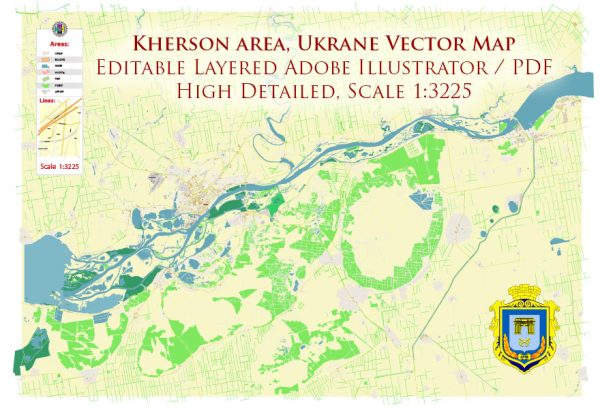Kherson is a historic city located in southern Ukraine, situated on the banks of the Dnieper River near its mouth on the Black Sea. Here’s a detailed description of Kherson:
- History:
- Kherson was founded in 1778 by Grigory Potemkin, a Russian military leader and statesman, as a fortress and a shipyard. It played a significant role in the Russian Empire’s expansion into the Black Sea region.
- The city’s name is derived from the Greek word “Chersonesos,” meaning peninsula, reflecting its strategic location on the Crimean Peninsula.
- Geography and Climate:
- Kherson is situated in the steppe zone of Ukraine, characterized by flat terrain and fertile soil.
- The city experiences a moderate continental climate with hot summers and mild winters. The proximity to the Black Sea influences the climate, providing some moderation.
- Economy:
- Historically, Kherson has been an important industrial and economic center. Shipbuilding, agriculture, and food processing are significant industries.
- The city’s location on the Dnieper River and the Black Sea has contributed to its role as a transportation hub, facilitating trade.
- Landmarks and Architecture:
- The city features a mix of architectural styles, reflecting its diverse history. Notable landmarks include St. Catherine’s Cathedral, built in the 18th century, and the Potemkin Palace, which was originally constructed for Grigory Potemkin.
- The Dnieper River embankment offers picturesque views and is a popular spot for locals and visitors alike.
- Cultural and Educational Institutions:
- Kherson is home to several cultural institutions, including theaters, museums, and art galleries. The Kherson State University is a prominent educational institution in the city.
- The city hosts various cultural events and festivals, celebrating its rich history and traditions.
- Population and Demographics:
- As of my knowledge cutoff in 2022, Kherson had a population of around 280,000 people. The population is diverse, reflecting the city’s historical connections with different cultures and ethnicities.
- Transportation:
- Kherson is well-connected by road, rail, and sea. The city has a port on the Dnieper River and is accessible by both river and sea vessels.
- Public transportation within the city includes buses and taxis.
- Challenges:
- Like many cities, Kherson faces urban challenges such as traffic congestion, pollution, and infrastructure maintenance. Economic fluctuations and political events in the region can also impact the city’s development.
- Recent Developments:
- Development projects and infrastructure improvements may have occurred since my last update. It’s recommended to check the latest sources for the most current information on Kherson.
Kherson’s rich history, strategic location, and cultural heritage make it a fascinating city with a unique blend of influences from different eras and civilizations.
Vectormap.Net provide you with the most accurate and up-to-date vector maps in Adobe Illustrator, PDF and other formats, designed for editing and printing. Please read the vector map descriptions carefully.


 Author: Kirill Shrayber, Ph.D.
Author: Kirill Shrayber, Ph.D.